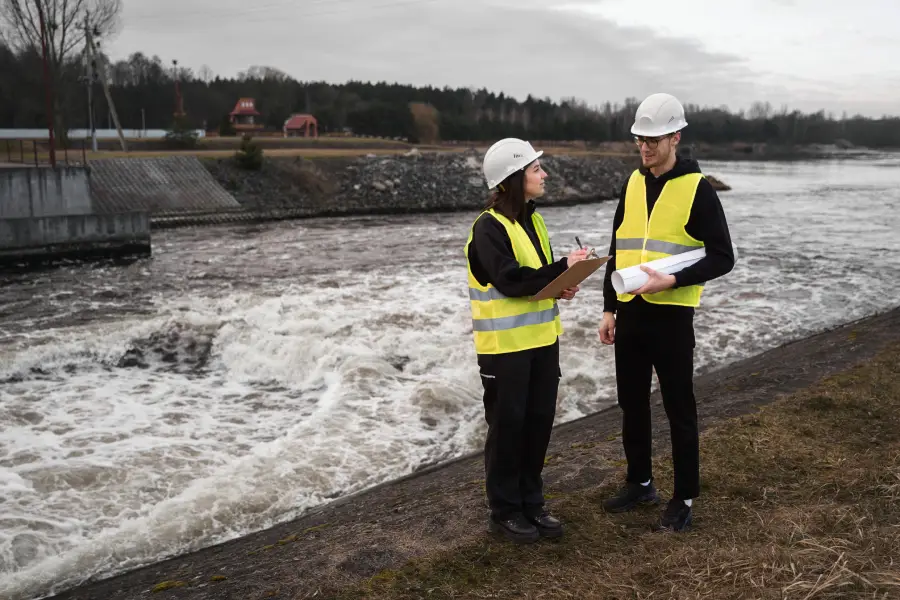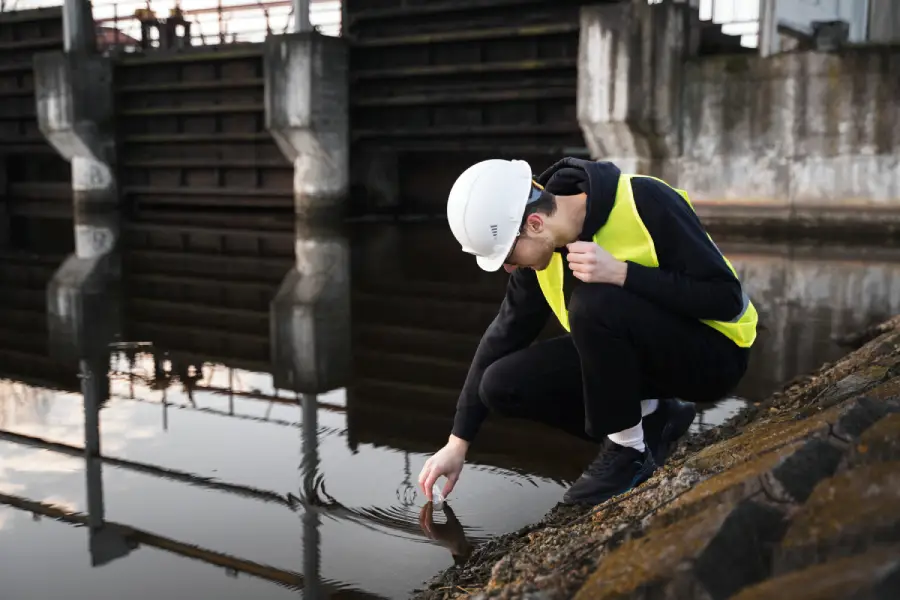Water is one of the most vital resources for life, health, and economic development. Managing it effectively requires technical expertise, sustainable planning, and innovative infrastructure. This is where water engineering comes in. As a specialized branch of civil engineering, water engineering focuses on the study, design, and management of systems that deliver clean water, treat wastewater, control floods, and protect communities from water-related hazards.
In this article, we’ll explore what water engineering is, examine its major fields, from water supply engineering to flood control and discuss how water engineers contribute to sustainability and resource management worldwide.
What Is Water Engineering?
Water engineering is a branch of civil engineering that deals with the design, construction, and management of systems related to water. It combines principles of hydraulics, hydrology, chemistry, and environmental science to ensure that water resources are used efficiently, safely, and sustainably.
The field covers a wide range of applications, including drinking water supply, wastewater treatment, stormwater drainage, flood protection, irrigation, and water conservation. In essence, water engineers ensure that communities have access to clean water, safe sanitation, and resilient infrastructure.

Water Supply Systems as a Part of Water Engineering
When people ask what is water supply engineering, they are referring to one of the most fundamental aspects of water engineering: ensuring safe and reliable access to clean water.
Design and Operation
Water supply engineering involves the design, operation, and maintenance of systems that collect, treat, store, and distribute water. This includes:
- Water sources: rivers, lakes, reservoirs, and groundwater aquifers.
- Water treatment plants: facilities that remove contaminants through processes like sedimentation, filtration, and disinfection.
- Distribution networks: pipelines, pumping stations, and storage tanks that deliver water to homes, industries, and businesses.
Importance
Reliable water supply systems protect public health, support agriculture and industry, and enhance quality of life. Water engineers design these systems to withstand population growth, climate change, and environmental stress.
Wastewater Management
Just as important as providing clean water is safely treating what comes out. Wastewater management is another central area of water engineering.
Water engineers design and manage wastewater treatment plants that process sewage and industrial effluent before returning it to rivers, lakes, or oceans. Treatment typically involves three stages:
- Primary treatment: physical removal of solids.
- Secondary treatment: biological processes that break down organic matter.
- Tertiary treatment: advanced steps like nutrient removal or disinfection.
Wastewater engineering reduces pollution, protects ecosystems, and allows for water reuse in irrigation or industrial processes, a key component of sustainability.
Stormwater Management
Urbanization has increased the challenge of handling stormwater runoff. Without proper systems, rainfall can overwhelm cities, causing flooding and water pollution.
Stormwater management uses both traditional infrastructure and green solutions to capture, store, and redirect runoff. Techniques include:
- Storm drains and culverts to move water away from streets.
- Retention ponds and detention basins to temporarily hold water.
- Green infrastructure such as permeable pavements, bioswales, and green roofs that absorb rainfall naturally.
By combining engineering with ecological design, stormwater systems reduce flooding risks while improving water quality.
Flood Control and Drainage
Floods are among the most destructive natural disasters worldwide, making flood control a critical responsibility of water engineers.
Flood Control Measures
- Levees and floodwalls: barriers that keep rivers from overflowing into cities.
- Dams and reservoirs: structures that regulate river flow and store excess water.
- Drainage systems: urban infrastructure that quickly removes excess rainwater.
Importance
By protecting lives, property, and infrastructure, flood control systems enhance community resilience. In an era of rising sea levels and climate change, water engineers play a crucial role in adapting cities and regions to new risks.
Hydraulic Engineering
Hydraulic engineering is a subfield of water engineering that focuses on the behavior of water in motion. It applies fluid mechanics to the design of canals, dams, spillways, irrigation systems, and water distribution networks.
Examples of hydraulic applications include:
- Designing spillways that safely release excess water from reservoirs.
- Modeling river flows to predict flooding.
- Creating irrigation channels that maximize efficiency for agriculture.
By understanding water dynamics, hydraulic engineers ensure that systems remain safe, efficient, and environmentally responsible.

Water Resources Planning and Management
Beyond individual systems, water engineers also focus on the big picture of resource planning. This involves balancing competing demands for water from households, agriculture, industry, and ecosystems.
Key responsibilities include:
- Assessing water availability through hydrological studies.
- Allocating resources among different users fairly and sustainably.
- Planning long-term strategies for drought resilience and population growth.
- Coordinating across jurisdictions, since rivers and aquifers often cross political boundaries.
Effective water resource management helps avoid scarcity, conflict, and ecological damage.
Water Conservation and Sustainability
In a world facing population growth and climate challenges, water conservation is more important than ever. Water engineers design systems that make better use of limited resources.
Approaches to Conservation
- Water reuse and recycling: treating wastewater to be reused in irrigation, cooling, or even potable systems.
- Rainwater harvesting: capturing rainfall for household or agricultural use.
- Efficient irrigation: using drip or sprinkler systems that reduce water waste.
- Leak detection and reduction: improving distribution networks to minimize losses.
Sustainability in Water Engineering
Sustainability means not only conserving water but also protecting ecosystems. Engineers work to design projects that maintain river health, restore wetlands, and integrate renewable energy (such as hydropower) responsibly.

Conclusion
So, what is water engineering? It is the branch of civil engineering that ensures society has clean water to drink, effective systems to treat wastewater, safe protection from floods, and sustainable ways to use this precious resource. From water supply engineering to stormwater systems, from flood control to conservation, water engineers shape how communities interact with water every day.
The role of water engineers extends far beyond technical design, they are stewards of one of the planet’s most vital resources. Their work protects public health, enables economic growth, and ensures that water remains available for future generations. In an era of global water stress and climate change, water engineering stands at the heart of sustainable development.
